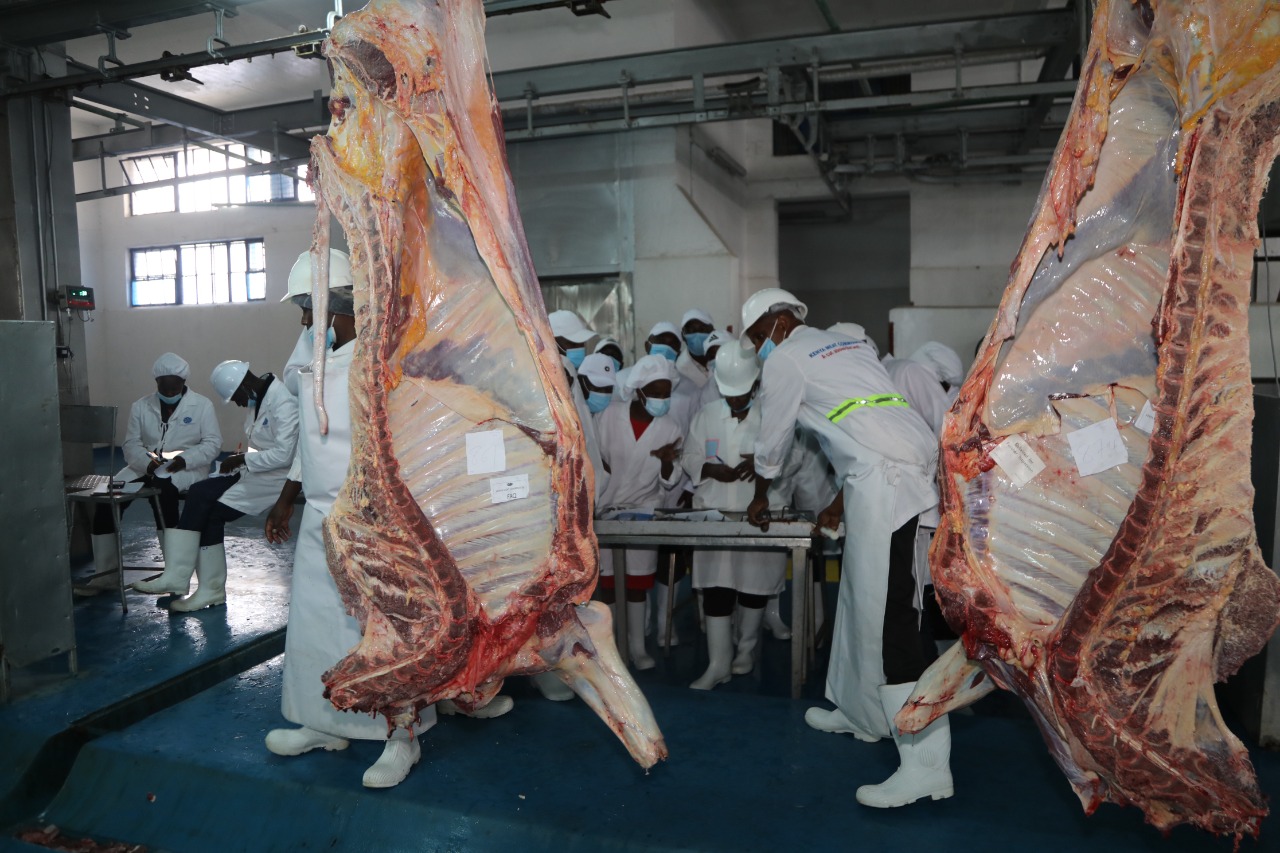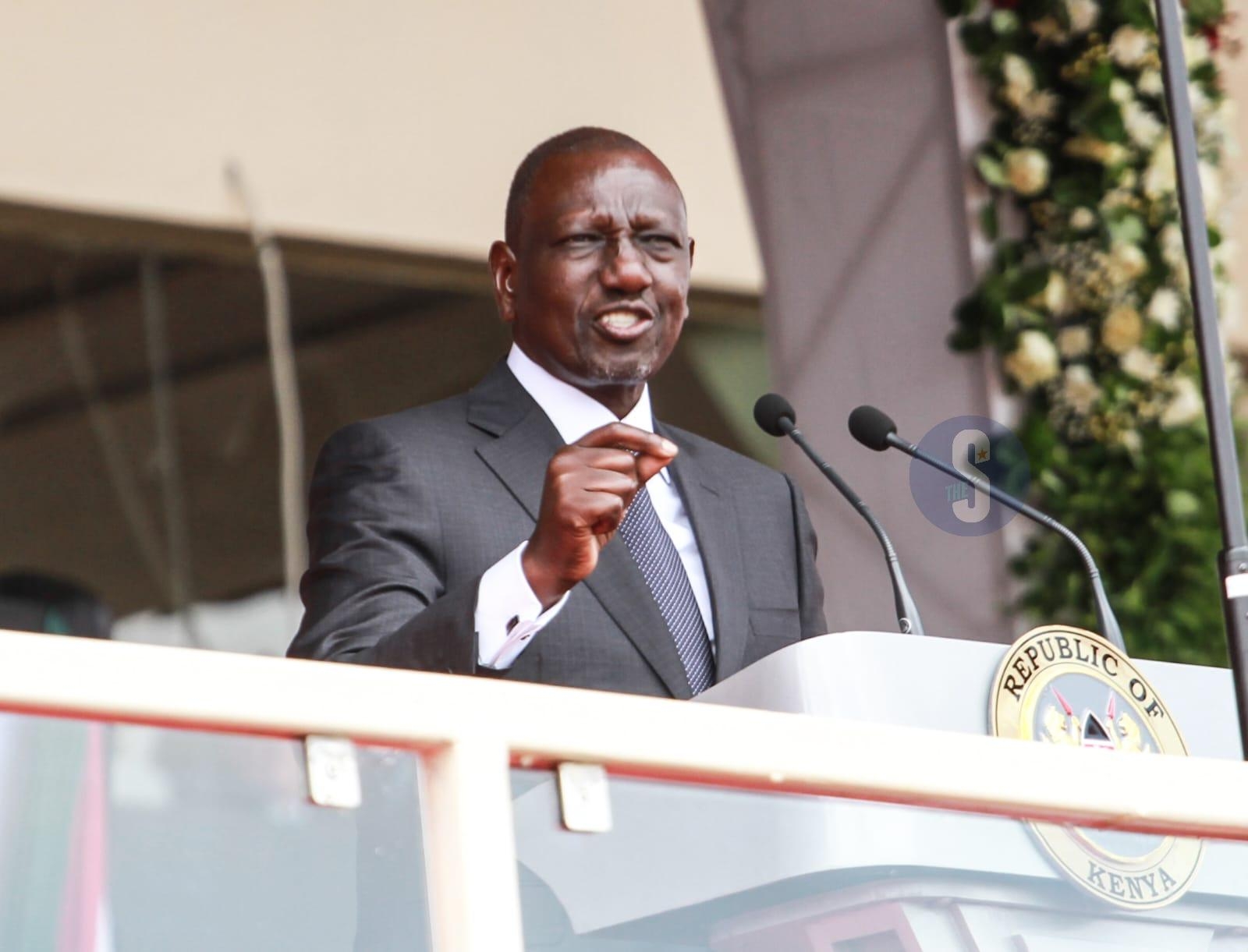 Meat Training Institute students during practical classes in Athi River, Machakos County./GEORGE OWITI
Meat Training Institute students during practical classes in Athi River, Machakos County./GEORGE OWITIThe livestock sector plays a pivotal role in Kenya’s economic growth, contributing 12 per cent of the country’s Gross Domestic Product (GDP) and 42 per cent of its agricultural output, Agriculture and Livestock Development Cabinet Secretary Mutahi Kagwe has said.
Kagwe emphasized that the sector is vital for food security and poverty reduction.
“The livestock sector is a major contributor to our economic growth, providing food, income, and jobs for millions of Kenyans,” he said.
The CS made the remarks in a speech delivered by a senior official from the Ministry during the 82nd graduation ceremony of the Meat Training Institute (MTI) in Athi River, Machakos County, on Wednesday.
At the event, 92 meat inspectors and 24 butchers graduated after completing a six‑month and one‑month training program, respectively.
Kagwe said the livestock sector was gaining more attention due to rising global and local demand for animal protein.
According to the 2019 Kenya National Census, the country’s animal resource base comprised 2.2 million dairy cattle, 559,000 beef‑dairy cattle, 13 million indigenous cattle, 19.3 million sheep, 28 million goats, 4.6 million camels, 1.2 million donkeys, 443,000 pigs, 30.3 million indigenous chickens, 5.6 million layers, 2.9 million broilers, 561,000 rabbits and 1.2 million beehives.
“The farm gate value of commodities derived from livestock production accounts for roughly 30 percent of total agricultural earnings,” Kagwe said.
He added that the livestock sector is the main source of livelihood for communities in Kenya’s arid and semi‑arid counties, employing about half of the agricultural workforce.
The sector also earns the country significant foreign exchange through the export of live animals, hides and skins, dairy products, and some processed pork products.
Kagwe highlighted the role of livestock in supporting rural families by providing income, draught power, organic fertiliser, transportation, and raw materials for agribusiness ventures.
He said the Ministry’s priorities align with the Bottom‑Up Economic Transformation Agenda (BETA), focusing on improved agricultural production, value addition, and marketing.
In the livestock sector, special focus is being placed on dairy, beef, and leather value chains.
“The BETA agenda recognises Kenya’s huge potential in livestock development, especially in the leather industry. Currently worth Sh1.5 billion and employing 17,000 people, it can expand into a Sh120 billion industry creating up to 100,000 jobs,” Kagwe said.
He added that Kenya will set up leather industry clusters in Athi River, Narok, Isiolo, and Wajir, while also seeking partnerships and technical support from international markets.
The Fourth Medium‑Term Plan (MTP IV), running from 2023–2027, aims for a 7 percent annual growth in the agriculture and livestock sector through innovation and commercialization.
Kagwe said the Ministry has implemented a range of strategic interventions, including creating an enabling environment for livestock development, boosting productivity, controlling disease, promoting market access, facilitating value addition, and strengthening institutional capacity.
He also commended the role of the Meat Training Institute in building the country’s capacity for meat inspection and hygiene.
The MTI equips animal health technicians with the knowledge and skills required to certify meat and other animal‑derived food products as safe and fit for human consumption.
“Safe and wholesome meat can only be produced in properly designed and well‑managed slaughterhouses. The graduands have a critical responsibility to ensure that meat products reaching the consumer adhere to the highest standards of hygiene and safety,” he stated.
Kagwe urged owners of slaughterhouses and butcheries to take advantage of MTI courses to educate their staff in best practices for hygienic meat production, handling, and processing.
MTI, established in 1972, has remained a cornerstone of Kenya’s meat inspection services. Its graduates have excelled nationally and across the region.
According to MTI Principal Jefferson Kaloki, the institution has witnessed a steady rise in the number of graduands over the years.
“Since 2019, the number of graduands has increased from 35 to 92 this year. The 107th meat inspection class is the largest in the institute’s history,” Kaloki said, adding that the institute is working with the relevant authorities to upgrade its courses from certificate to diploma level in veterinary public health.

















